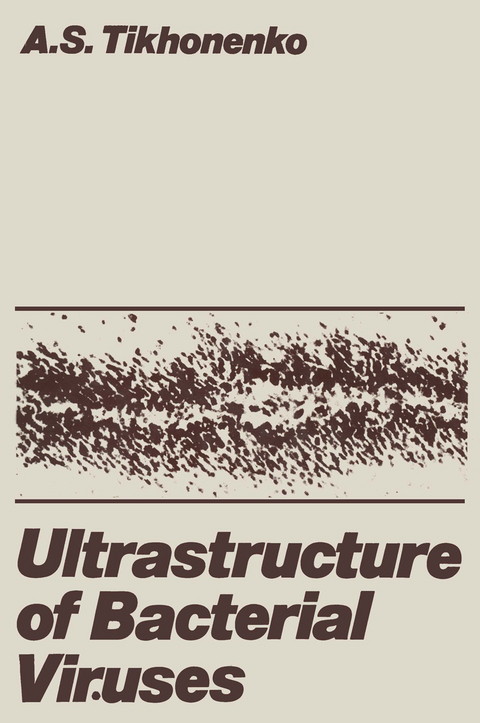
Ultrastructure of Bacterial Viruses
Springer-Verlag New York Inc.
978-1-4684-1781-4 (ISBN)
1. Electron-Microscopic Methods of Investigation of Bacteriophages.- The Supporting Grids.- Preparation of the Mounting Film.- Methods of Preparing Suspensions of Bacteriophages.- Methods of Obtaining Concentrated Suspensions of Phages.- Purification of Biological Preparations.- Contrasting of Objects.- Methods of Fixation of Bacteria for Preparation of Ultrathin Sections.- Terminology.- 2. Classification of Phages Based on Morphological Characteristics.- 3. Filamentous Phages and Phages with Tail Analogs.- Filamentous Phages (Group I).- Phages with Tail Analogs (Group II).- 4. Short-Tailed Phages (Group III).- Subgroup I: Phages of Type T3 and T7.- Subgroup II: Phages of Type P22, sd.- 5. Phages with a Noncontracting Tail (Group IV).- Structural Variation among Phages with a Noncontracting Tail.- 6. Phages with a Tail Possessing a Contractile Sheath (Group V).- Phage T2 HO.- Phage No. 1 of Bacillus mycoides.- Phage N19 of Bacillus mycoides.- Phages of Bacillus subtilis.- Staphylococcal and Streptococcal Phages.- 7. Defective Phages and Bacteriocins.- 8. Action of Chemical and Physical Agents on Various Phages.- Action of pH.- Urea and Other Agents Breaking Hydrogen Bonds.- Detergents.- Freezing and Thawing.- The Effect of Temperature.- Action of Adenosinetriphosphatase on Phages.- 9. The Aggregative Properties of Phage Proteins.- Polysheaths.- Polyrods.- Polyheads.- 10. Phosphatase Activity of Phages and Some Properties of the Contractile Phage Protein.- Localization of Phosphatase Activity in Structural Elements of Phage T2.- Physicochemical Properties of the Contractile Protein of Phage T2.- 11. Organization of Phage DNA During Its Replication in the Bacterial Cell.- Conclusion.- Literature Cited.
| Zusatzinfo | X, 294 p. |
|---|---|
| Verlagsort | New York, NY |
| Sprache | englisch |
| Maße | 152 x 229 mm |
| Themenwelt | Sachbuch/Ratgeber ► Natur / Technik ► Garten |
| Medizin / Pharmazie ► Medizinische Fachgebiete ► Mikrobiologie / Infektologie / Reisemedizin | |
| Studium ► Querschnittsbereiche ► Infektiologie / Immunologie | |
| Naturwissenschaften ► Biologie ► Mikrobiologie / Immunologie | |
| ISBN-10 | 1-4684-1781-9 / 1468417819 |
| ISBN-13 | 978-1-4684-1781-4 / 9781468417814 |
| Zustand | Neuware |
| Haben Sie eine Frage zum Produkt? |
aus dem Bereich


